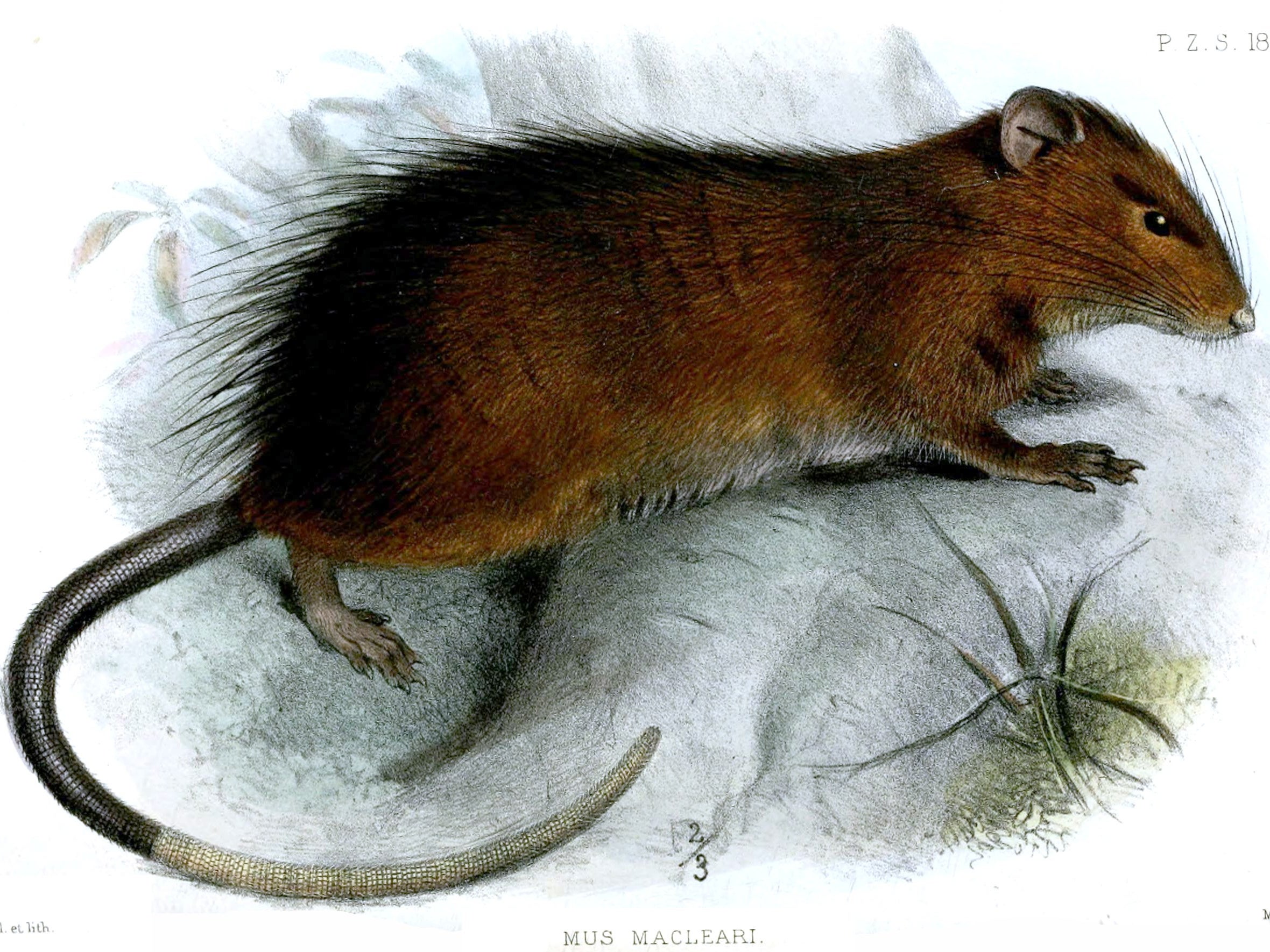Christmas Island rat wiped out 120 years ago by European disease could be resurrected
Research is good ‘test case’ for recreating mammoths using elephants, researches say

Around 120 years ago, “hyperdisease conditions” on Australia’s Christmas Island brought by European ships spelled the demise of the island’s unique species of rat, but now, scientists are exploring the possibility of resurrecting this extinct creature.
While in popular culture the “de-extinction” of prehistoric animals such as dinosaurs and mammoths appeals to the imagination, the examination of resurrecting a more recently extinct creature provides new insights into the extent to which it is possible.
The team of palaeontologists investigating the limits of what is possible in bringing back the Christmas Island rat, Rattus macleari, said that “de-extinction work is defined by what is unknown”.
This is because the process depends on rebuilding degraded DNA, which therefore doesn’t contain all the genetic information required to rebuild the full genome of the animal.
This is the case with carcasses of mammoths found frozen in ice in Siberia – the freezing of the ice has usually damaged the DNA.
However, with the Christmas island rat, which went extinct in 1903, the team said they “lucked out”, as they not only managed to obtain almost all of the rodent’s genome, but because the species relatively recently diverged from extant rat species, it shares about 95 per cent of its genome with the Norway brown rat.
“It was quite a nice test model,” said evolutionary geneticist Professor Tom Gilbert from the University of Copenhagen.
“It’s the perfect case because when you sequence the genome, you have to compare it to a really good modern reference.”
After the DNA has been sequenced as well as possible and the genome is matched up against the reference genome of the living species, the scientists then identify the parts of the genomes that don’t match up and, in theory, would then edit the DNA of the living species to match that of the extinct one.
The brown-rat-to-Christmas-Island-rat scenario is “a particularly good test case”, the research team said, because the evolutionary divergence between rats is similar to that of the elephant and the mammoth.
But while the sequencing of the Christmas Island rat was mostly successful, a few key genes were missing. These genes were related to olfaction, meaning that a resurrected Christmas Island Rat would likely be unable to process smells in the way as it would have originally.
“With current technology, it may be completely impossible to ever recover the full sequence, and therefore it is impossible to ever generate a perfect replica of the Christmas Island rat,” said Professor Gilbert.
“It is very, very clear that we are never going to be able to get all the information to create a perfect recovered form of an extinct species,” he said.
“There will always be some kind of hybrid.”
Though a replica will never be perfect, the key is that scientists are able to edit the DNA that makes the extinct animal functionally different from the living one.
Professor Gilbert said that in order to make an ecologically functional mammoth, for example, it might be enough to edit elephant DNA to make the animal hairy and able to live in the cold.
“If you’re making a weird fuzzy elephant to live in a zoo, it probably doesn’t matter if it is missing some behavioural genes,” he said.
“But that brings up a whole lot of ethical questions.”
Professor Gilbert said he is planning to begin the gene editing on rats but would like to start with species that are still living.
He hopes to change a black rat genome to a Norway brown rat, before attempting to resurrect the Christmas Island rat.
But while he said he is excited about his future research, he has certain doubts about undertaking it.
“I think it’s a fascinating idea in technology, but one has to wonder if that’s the best use of money as opposed to keeping the things alive that are still here,” he said.
The study is published in the journal Current Biology.
Subscribe to Independent Premium to bookmark this article
Want to bookmark your favourite articles and stories to read or reference later? Start your Independent Premium subscription today.

Join our commenting forum
Join thought-provoking conversations, follow other Independent readers and see their replies